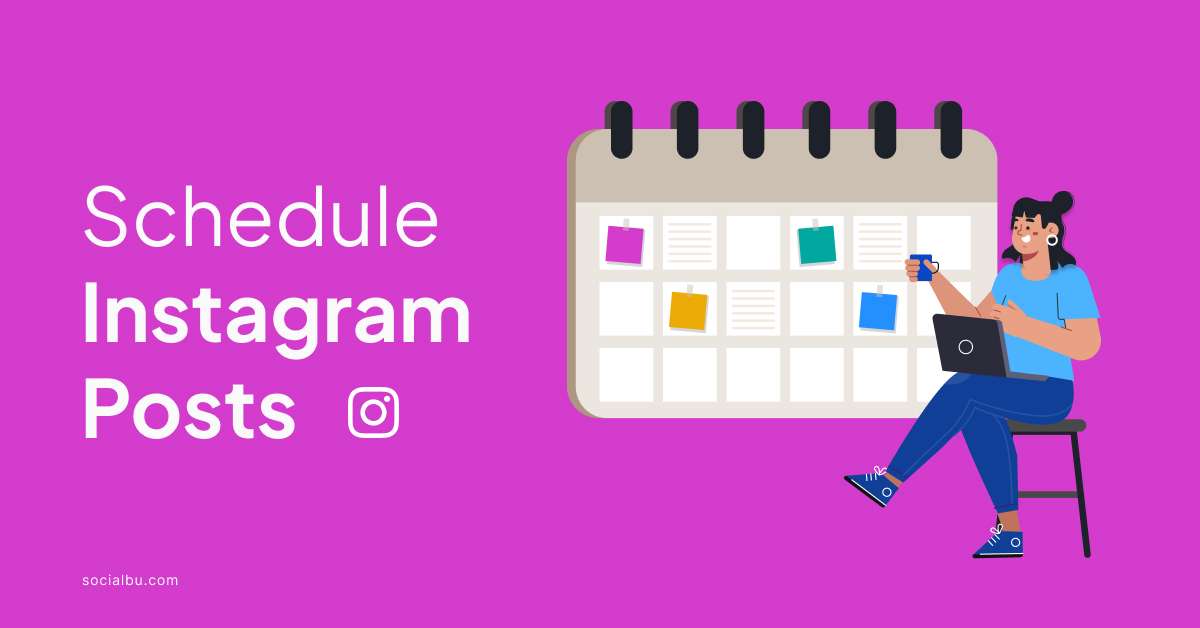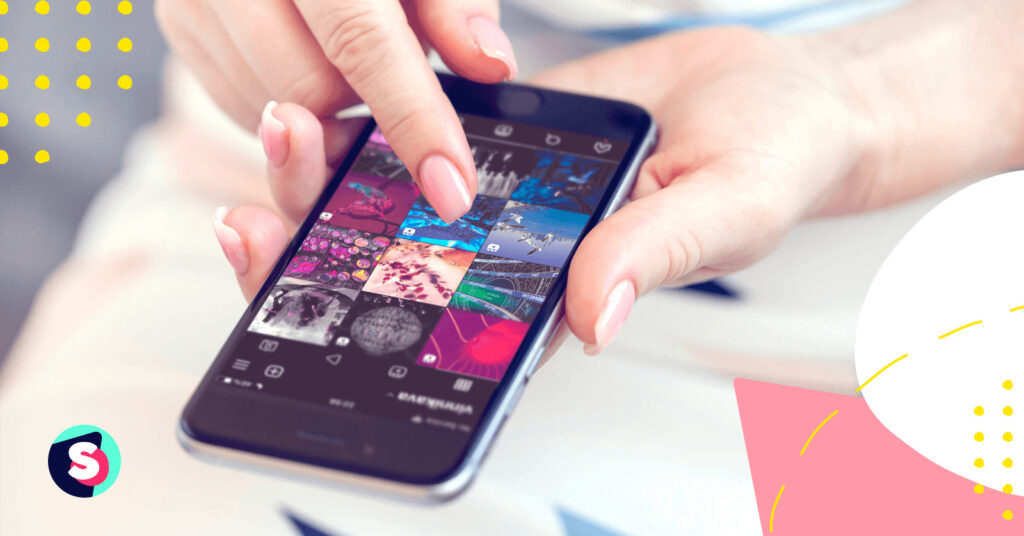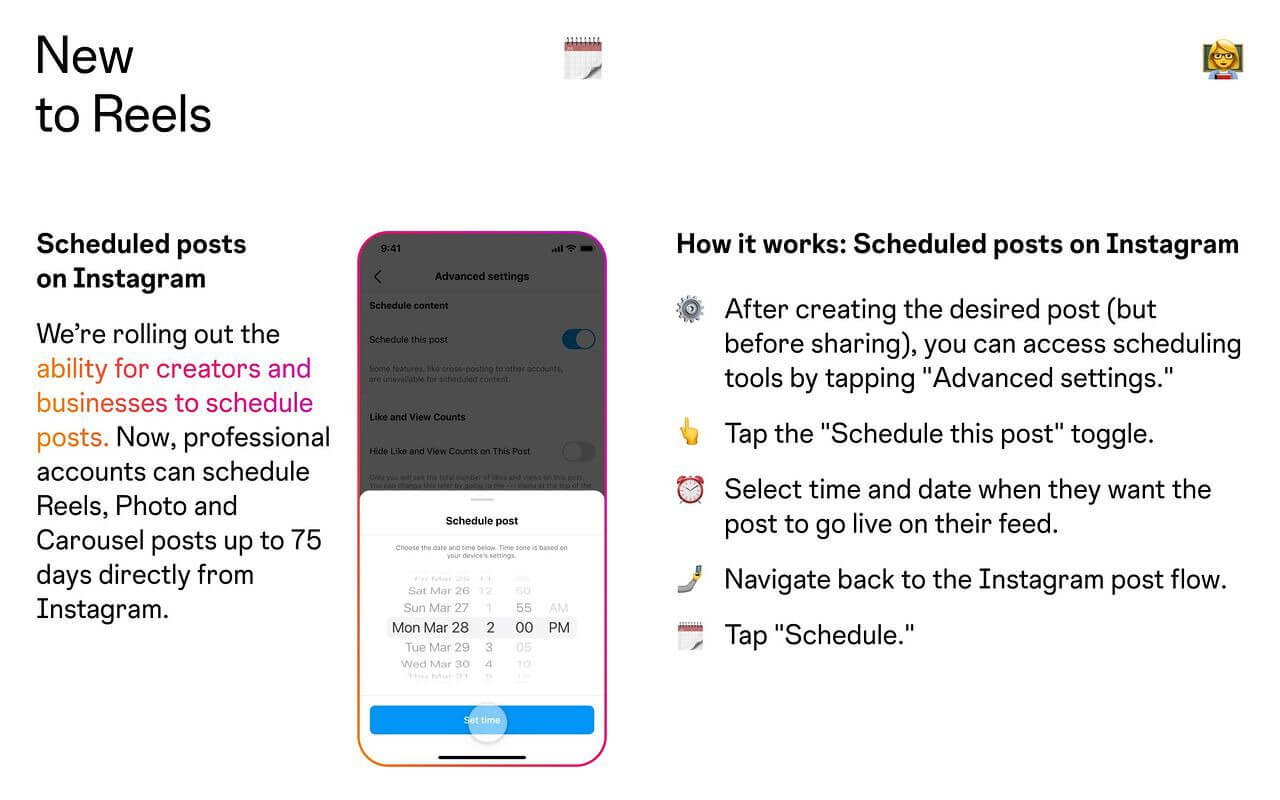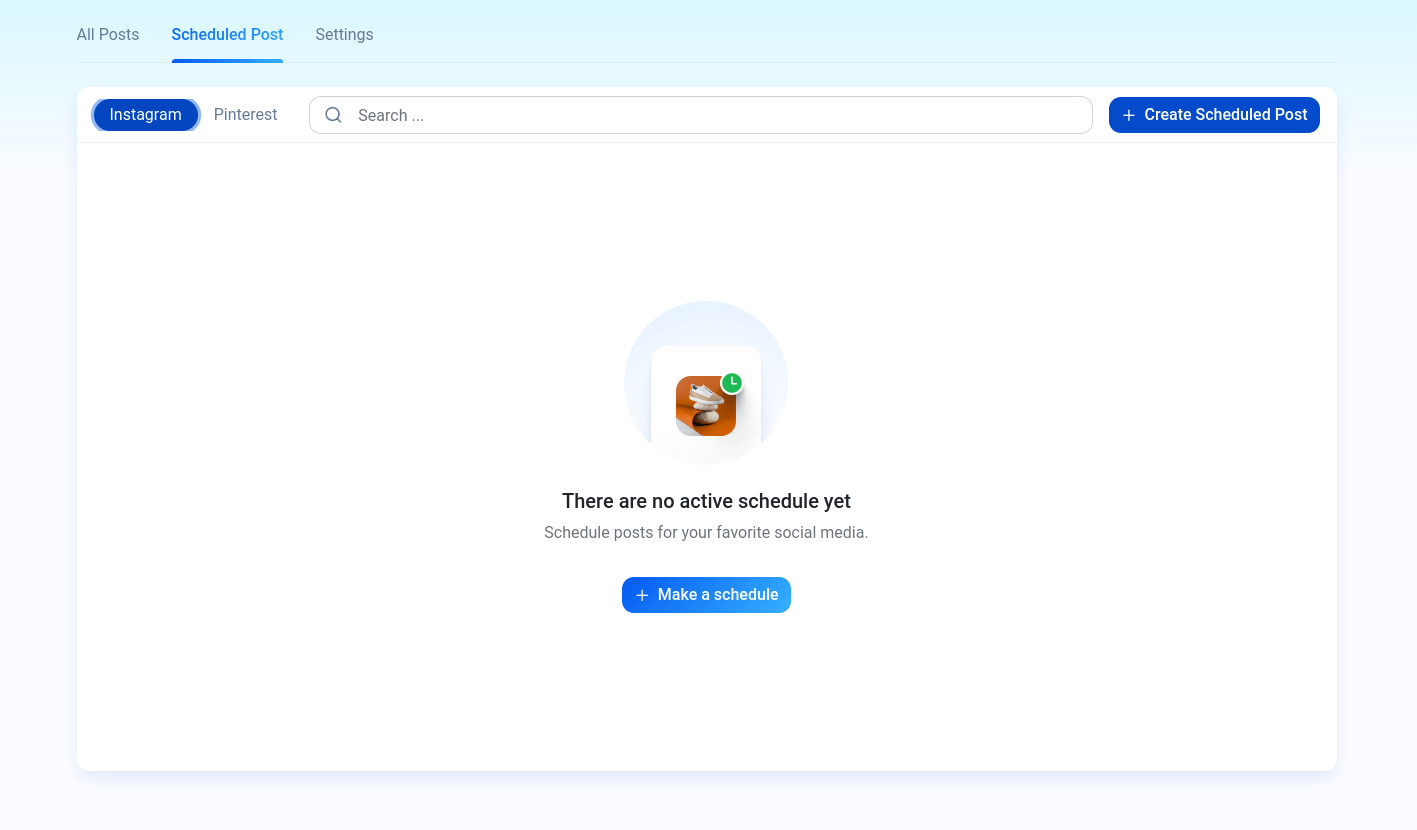How to Schedule Posts on Instagram: 3 Easy Steps

Instagram has become an indispensable tool for businesses, influencers, and content creators to reach and engage with their target audiences. One of the key strategies to maximize your presence on this platform is by scheduling posts in advance. By doing so, you can ensure a consistent flow of content, save time, and effectively manage your social media presence. In this article, we will guide you through the process of scheduling posts on Instagram with a step-by-step breakdown, covering the essential features and best practices to make your content strategy a success.
The Benefits of Scheduling Posts on Instagram

Instagram’s scheduling feature offers numerous advantages for content creators and businesses alike. Firstly, it allows you to plan and organize your content in advance, ensuring a well-thought-out and consistent posting strategy. By allocating dedicated time for content creation and scheduling, you can maintain a regular presence on the platform without the daily scramble to craft and publish posts.
Additionally, scheduling posts enables you to optimize your engagement with the audience. By analyzing your followers’ activity and identifying the best times for posting, you can maximize the reach and impact of your content. This strategic approach ensures that your posts are visible to the right people at the most opportune moments, increasing the likelihood of likes, comments, and shares.
Moreover, scheduling posts saves valuable time and resources. Instead of spending every day creating and uploading content, you can batch your content creation and scheduling processes. This efficiency allows you to focus on other aspects of your business or content strategy, such as engaging with followers, crafting compelling captions, or exploring new creative directions.
Lastly, the scheduling feature provides a sense of reliability and consistency to your followers. By maintaining a regular posting schedule, your audience can anticipate and look forward to your content, fostering a stronger connection and engagement with your brand or personal profile.
Step 1: Choosing the Right Scheduling Tool

Before diving into the process of scheduling posts, it’s crucial to select a suitable scheduling tool that integrates seamlessly with Instagram. While Instagram itself does not offer native scheduling capabilities, numerous third-party tools are available to facilitate this process.
Here are some popular scheduling tools that integrate well with Instagram:
- Hootsuite: A comprehensive social media management platform that allows you to schedule and publish posts across multiple social media platforms, including Instagram.
- Later: A dedicated Instagram scheduling tool that offers a user-friendly interface and advanced features like visual planning and analytics.
- Buffer: Another popular social media management tool that simplifies the scheduling process and provides insights into post performance.
- Sprout Social: A powerful platform that offers robust scheduling capabilities and advanced analytics to monitor and improve your Instagram strategy.
When choosing a scheduling tool, consider factors such as ease of use, integration with other social media platforms, pricing plans, and additional features like analytics and visual planning.
Getting Started with Your Chosen Tool
Once you’ve selected your preferred scheduling tool, follow these steps to set up your account and start scheduling:
- Create an account on the chosen platform by providing your basic information and selecting a suitable pricing plan.
- Connect your Instagram account to the scheduling tool. Most tools provide a straightforward process to link your Instagram account, allowing you to access your profile and post content.
- Explore the platform’s features and interface to familiarize yourself with the scheduling process and any additional functionalities it offers.
- If your chosen tool provides a visual planning feature, take advantage of it to create a content calendar and plan your posts strategically.
Step 2: Crafting Engaging Content for Instagram
Before you begin scheduling posts, it’s essential to have a clear understanding of the type of content that resonates with your target audience on Instagram. Here are some key considerations to keep in mind when crafting engaging content:
- Know Your Audience: Understand your followers’ interests, preferences, and pain points. Create content that addresses their needs and speaks to their aspirations.
- Visual Appeal: Instagram is a highly visual platform. Ensure your posts are visually appealing and aligned with your brand aesthetics. Invest in high-quality images or videos that capture attention and convey your message effectively.
- Captivating Captions: Craft compelling captions that add context to your visual content. Use a blend of storytelling, humor, or thought-provoking language to engage your audience and encourage interaction.
- Hashtags: Leverage the power of hashtags to increase the visibility of your posts. Research and select relevant hashtags that align with your content and target audience. Avoid overusing hashtags and aim for a balanced approach.
- Consistency: Maintain a consistent tone, style, and theme across your posts. This helps to establish a recognizable brand identity and builds familiarity with your followers.
Creating a Content Calendar
A content calendar is a valuable tool to organize and plan your Instagram posts. It allows you to map out your content strategy, ensuring a well-rounded and diverse range of posts. Here’s how to create an effective content calendar:
- Identify the themes or topics you want to cover in your posts. These could be based on your brand values, products, or areas of expertise.
- Determine the frequency of your posts. Consider your available resources, engagement goals, and the needs of your audience. Aim for a balance between consistency and providing fresh content regularly.
- Create a grid or table to organize your posts. Include columns for post type (e.g., image, video, carousel), content theme, caption ideas, and scheduled date.
- Populate your calendar with a mix of content types, including promotional posts, behind-the-scenes content, user-generated content, and educational or informative posts.
- Review and refine your content calendar regularly to ensure it aligns with your brand strategy and audience expectations.
Step 3: Scheduling Posts on Instagram
With your chosen scheduling tool and a well-planned content calendar, you’re now ready to schedule posts on Instagram. Here’s a step-by-step guide to the process:
- Log in to your scheduling tool’s dashboard and navigate to the Instagram scheduling section.
- Select the desired post type (image, video, carousel, etc.) and upload the media you wish to publish.
- Compose an engaging caption for your post, incorporating relevant hashtags and a call to action to encourage engagement.
- Choose the specific date and time you want your post to go live. Most scheduling tools allow you to set a precise time, ensuring your post appears at the optimal moment.
- Review your post preview to ensure it looks and reads as intended. Pay attention to the visual layout, caption formatting, and overall presentation.
- Once you’re satisfied with your post, click the “Schedule” button to finalize the process. Your post will be added to your queue and published at the scheduled time.
- Monitor your scheduled posts and analyze their performance using the analytics features provided by your scheduling tool. This data will help you refine your content strategy and optimize future posts.
Best Practices for Scheduling Posts
To maximize the effectiveness of your scheduled posts, consider these best practices:
- Consistency: Aim for a consistent posting schedule to establish a reliable presence on Instagram. Your followers will come to expect and anticipate your content, fostering a stronger connection with your brand.
- Timing: Analyze your followers’ activity patterns to identify the best times for posting. Tools like Later’s Best Time to Post feature or Instagram Insights can provide valuable data to optimize your scheduling strategy.
- Variety: Mix up your content types to keep your feed engaging and dynamic. Include a combination of images, videos, carousels, and stories to cater to different preferences and formats.
- Hashtag Strategy: Research and utilize relevant hashtags to increase the discoverability of your posts. Consider creating branded hashtags specific to your business or campaign to track engagement and build a community around your content.
- Interaction: Even though your posts are scheduled, engage with your followers’ comments and messages. Responding promptly to interactions demonstrates your commitment to your community and fosters a positive relationship with your audience.
| Scheduling Tool | Pricing Plans |
|---|---|
| Hootsuite | Professional - $29/month; Team - $129/month; Enterprise - Custom |
| Later | Starter - Free; Growth - $9/month; Advanced - $24/month |
| Buffer | Pro - $15/month; Premium - $65/month; Business - $99/month |
| Sprout Social | Standard - $99/month; Professional - $149/month; Advanced - $249/month |

Can I schedule posts directly from Instagram?
+Instagram does not offer native scheduling capabilities. However, you can use third-party scheduling tools that integrate with Instagram to schedule and publish posts.
How many posts should I schedule at once?
+The number of posts you schedule at once depends on your content strategy and resources. It’s recommended to batch create and schedule content to maintain a consistent flow. Aim for a balance between having a content backlog and being responsive to current trends and events.
Can I schedule Instagram Stories as well?
+Yes, most scheduling tools also offer the ability to schedule Instagram Stories. This feature allows you to plan and publish Stories in advance, ensuring a consistent presence in your followers’ Stories feed.
How can I analyze the performance of my scheduled posts?
+Use the analytics features provided by your scheduling tool or Instagram Insights to track the performance of your scheduled posts. Analyze metrics such as reach, engagement rate, and follower growth to optimize your content strategy.



